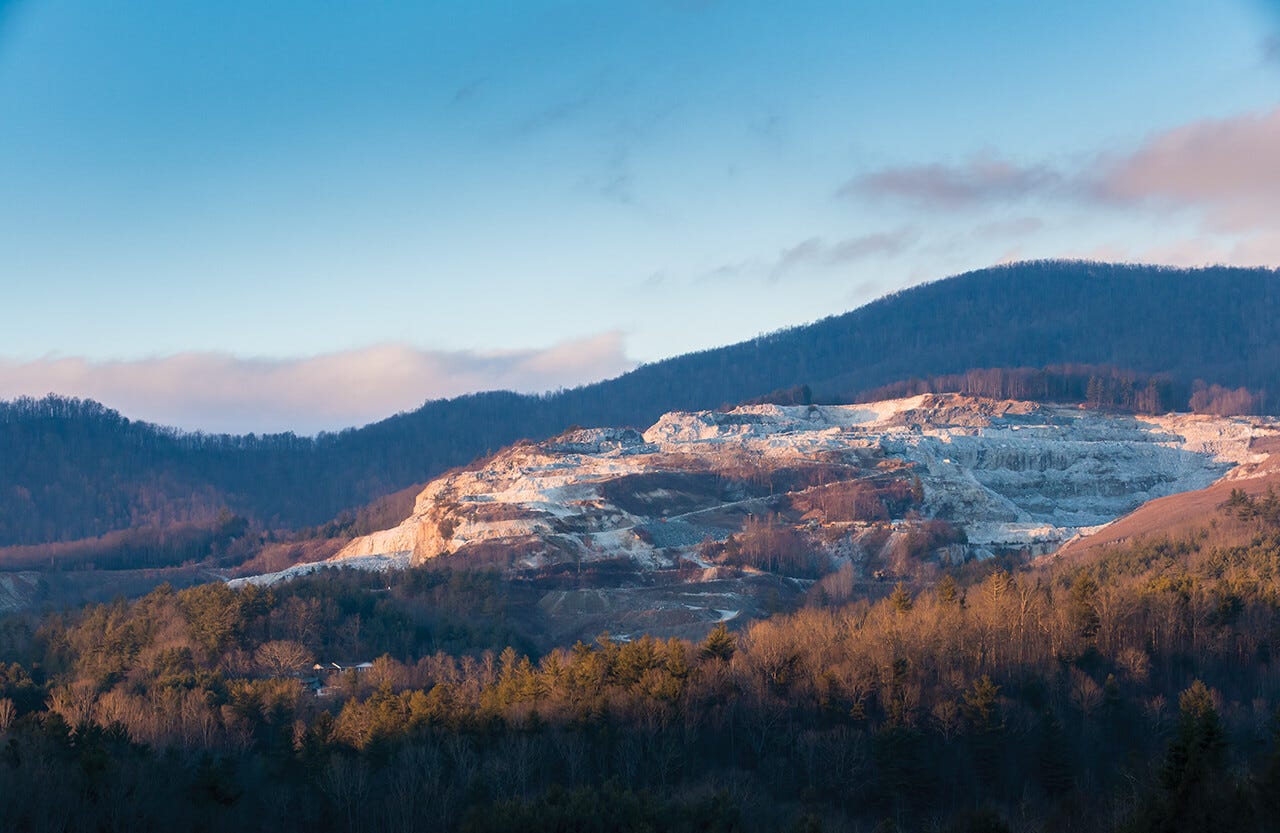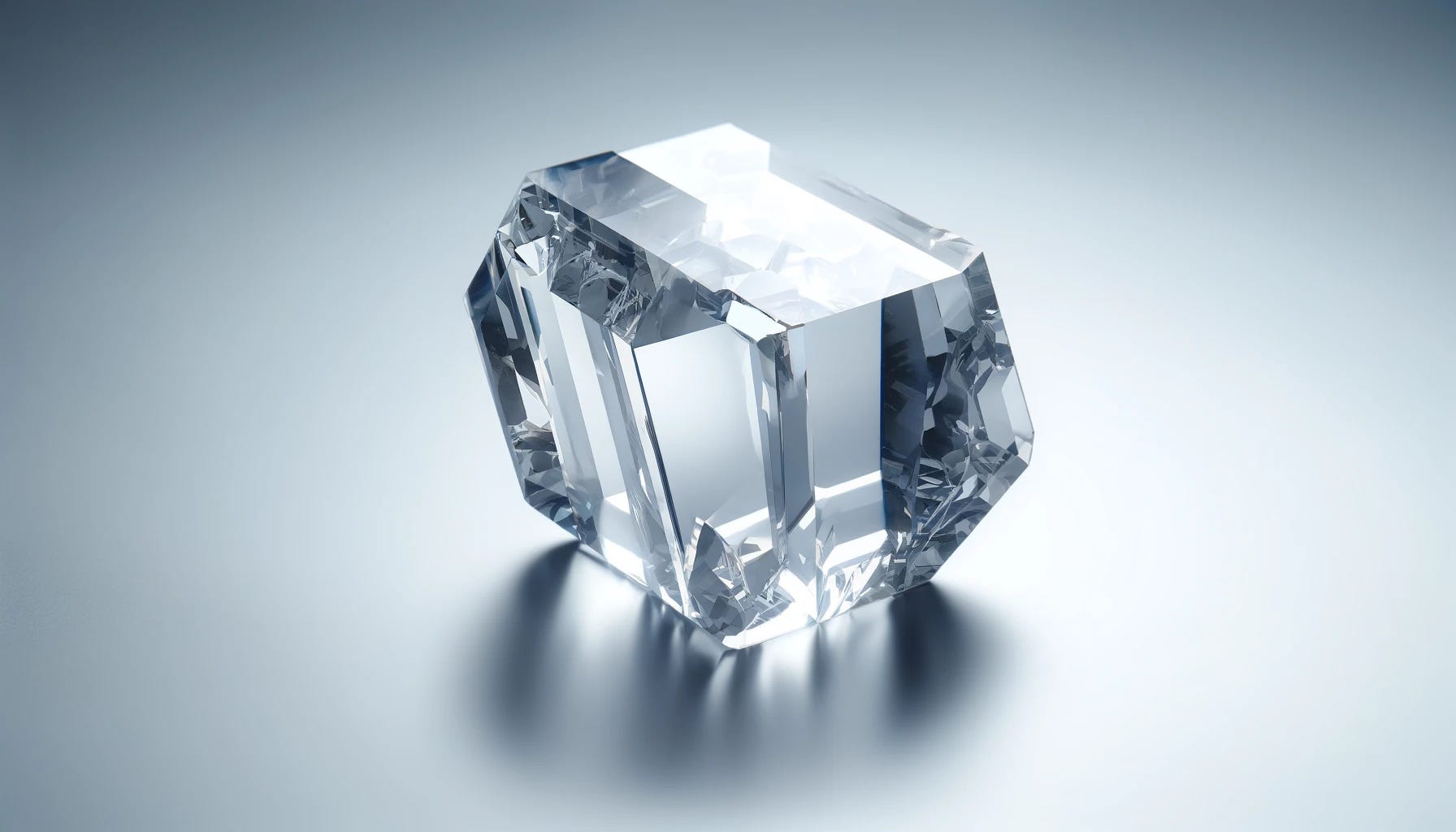Point of Failure: Semiconductor-Grade Quartz
How a key material in chip production mostly comes from one town in North Carolina
We rarely think about where our stuff comes from or how it’s made. We go through our lives expecting that the things we consume are easily acquired. That is the beauty of modern society: supply chain logistics work so well that we seldom think about the consequences if these systems are disrupted. I think many of us thought about this for the first time during the COVID-19 pandemic. It was a wake-up call that revealed how fragile these systems could be, as it disrupted everything from basic goods to high-tech products.
Since the pandemic, I’ve become mildly interested in other supply chain vulnerabilities that could arise. Recently, I discovered one that is particularly concerning: the supply of semiconductor-grade quartz, which virtually all (~90%) comes from one place—Spruce Pine, North Carolina.

What is semiconductor-grade quartz?
Semiconductor-grade quartz is a highly purified form of silicon dioxide (SiO₂), essential for producing silicon wafers used in microchips. These chips power the modern world, from smartphones to cars. Although quartz is the most abundant mineral on Earth, only an extremely small amount of it can be refined to reach the 99.9999% purity (6N) required for semiconductor production. The reason? Most quartz contains trace amounts of contaminants like iron and aluminum, which make it unsuitable for high-tech applications.
Currently, the only known deposit in the world capable of consistently producing at scale ultra-high-purity quartz for semiconductors is located in the mountains surrounding Spruce Pine, North Carolina. Only two companies, The Quartz Corp and Covia Corp, operate in this area, tightly controlling the extraction and refinement processes.
To me, it is incredibly fascinating and at the same time concerning that such key material is mostly produced in one place by an oligopoly.
What are the alternatives?
As of now, there are no scalable alternatives to the semiconductor-grade quartz produced in Spruce Pine. Refining lower-purity quartz is possible but extremely expensive, requiring massive energy consumption and producing significant hazardous waste. Synthetic quartz is another option, but its production is still relatively small and expensive, with only a few companies in the U.S., Germany, Japan, and France producing it.
The Point of Failure
Why was I thinking about the production of this obscure material over the weekend? Spruce Pine, North Carolina is deep in the Appalachian Mountains of North Carolina, right in the path of Hurricane Helene. There is only one road that connects Spruce Pine with the rest of the world, which means any disruption to this road could impact the ability to transport this crucial material.

At the time of writing, I wasn’t able to find concrete information on the impact of Hurricane Helene on Spruce Pine specifically, but surrounding towns have already been devastated by flooding. As of now, it remains to be seen whether this hurricane will affect the production and distribution of semiconductor-grade quartz.
If the hurricane's impact is severe enough to halt production for even a few months, we could see significant supply chain bottlenecks ripple across the high-tech hardware industry. Since so much of our modern technology relies on this material, any prolonged disruption could have far-reaching consequences for the global economy.
It makes you wonder: what other critical materials have such a significant point of failure?
If you want to learn more about this material and where it is produced, this excerpt from the book The World in a Grain by Vince Beiser is a great start.



Coupled with the bottlenecking of high end chip manufacturing in Taiwan the future of our digital economy seems to be built on a foundation of toothpicks.
I've read a piece I think on Substack detailing why world chip silly isn't critically different on this place for multiple reasons. another source actually exist + synthetic refining is possible etc.
sry can't locate it. but a reputable writer